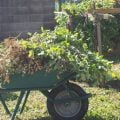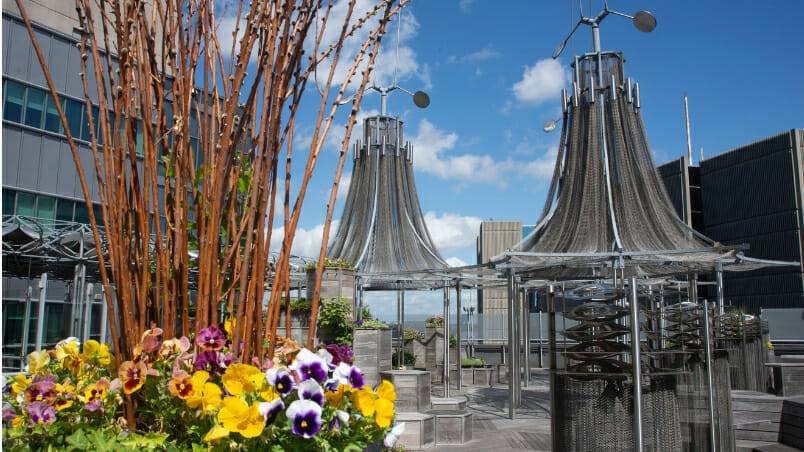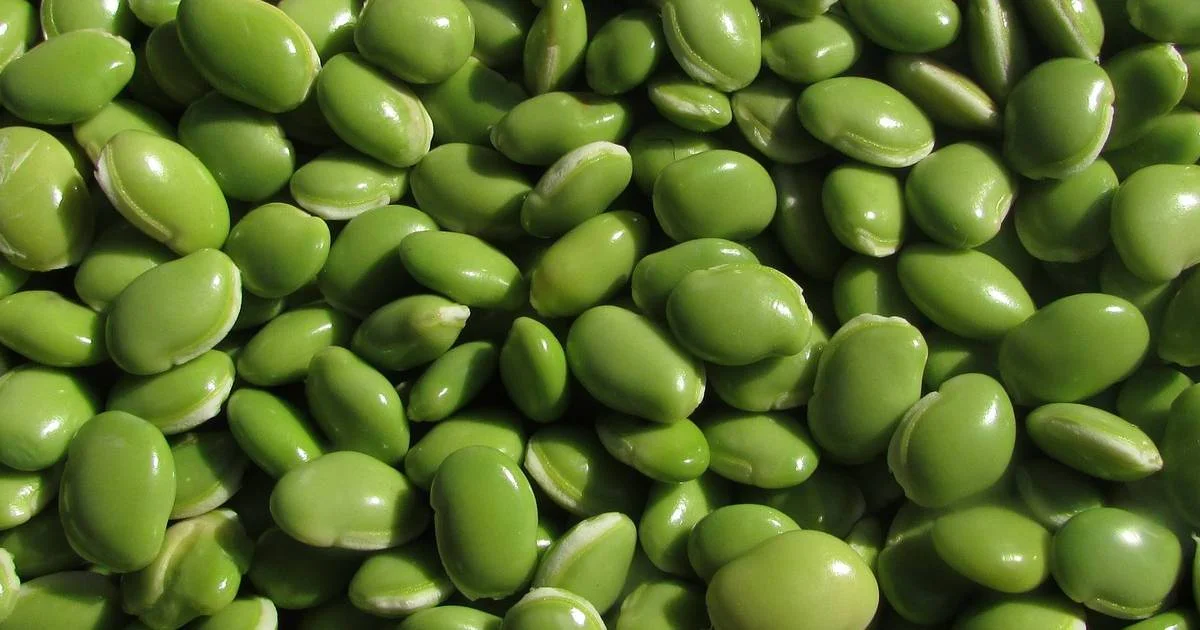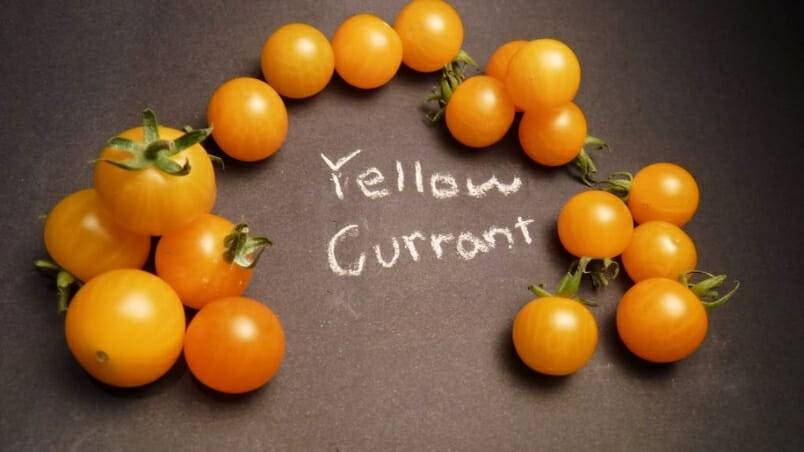Introducing our newest gardening blog: Dispatches from a Japanese Garden, by Keith Adams.
Through the magic of social media, our food editor, Signe Langford, reached out to an old high school buddy, who had moved to Japan decades ago; this collaboration is the result.
Hippie, much? Those were the days, but really, once a flowerchild, always a flowerchild. Almost 40 year on, Keith Adam and I are still nature- and music-lovers and gardeners.
“Keith and I enjoyed something of a charmed adolescence in bucolic Hudson, Quebec: we made music, swam, and just hung out with our gang – winter and summer – in summer, it was under the stars. There were midnight raids on farmers’ corn fields and swimming pool invasions; we ate local honey straight from the jar with a couple of spoons; we danced barefoot to Jimi Hendrix and The Doors; and yes, we were all a tad, shall we say, experimental? But we survived, some even thrived, and many of us held onto and nurtured a love of nature and music. Naturally, we all went our separate ways, but I was delighted to reconnect with many friends from the day, and fascinated by who they had become and where they were. Keith landed with his feet in Japanese soil, and watching his exploits online made me jealous; I mean, he’s out in his garden, planting potatoes in the dead of winter, when I’m over here, tussling with my cat and Chihuahua for a spot in front of the fire. But then it came to me; why sit here all envious, when I can put the man to work, sharing his gardening stories, tips, and tricks with all of us? I hope you enjoy reading Keith’s monthly blog posts – Dispatches from a Japanese Garden – as much as I enjoy bringing them to you.
– – – – – – – – – – – – – – –
Down a small hill, past a parking lot that until last year was a rice paddy, creeps an electric four wheel scooter. In the driver’s seat, a 90-year-old woman parks her rig, then ambles off to tend her fields behind the new supermarket. When she stands, she doesn’t straighten up, but tilts forward, her back bent at a shocking 90 degree angle, the result of an extreme calcium deficiency, commonly seen in women old enough to have lived through the Second World War. Despite her tiny, hobbled body, she happily tends over thirty 25-meter long, lush, perfectly weeded beds of cabbage, sweet potato, okra, lettuce, tomato, cucumber and eggplant.

An old woman heading to her garden, past a parking lot that until just last year, was a verdant, green rice field.
On the other side of the railroad tracks, yellow and black Komatsu backhoes dig up the once numerous cement irrigation canals constructed to bring water to the countless small rice paddies built after World War II, designed to ensure Japan’s food self-sufficiency. Ever since it came into power in the 1950s, the Liberal Democratic Party – AKA Jimintō – has subsidized farmers. However, laws that once protected the canals and tanbo – or rice paddy fields – are now changing. Prime Minister Abe is one of the architects of the Comprehensive and Progressive Agreement for Trans-Pacific Partnership (CPTPP) set up after President Trump pulled out of the Trans-Pacific Partnership (TPP). This new trade agreement, involving 11 countries, including Canada, and representing 13.4 percent of the global GDP, will open up land ownership to foreign companies and lower tariffs for agricultural imports. It has farmers across as Japan as worried as Canadian Dairy farmers are about the USMCA.

Some of the last remaining traditional small rice fields; they’ve not been drained and paved…yet.
After a relaxation of rules allowed companies to snatch up to 50 percent of farmland, compared to the previous limit of 10 percent, the number of corporations owning farmland mushroomed from 1,732 in 2009 to 13,561 in 2012. All across the nation, smaller paddies are being dug up and merged into single, larger fields suitable for mechanized farming. The enormous Aeon retail store – Japan’s version of Walmart – is in the process of doing to agriculture what it has done to retail: across the country, small farms and small shops are being put out of business, as it tries to bring industrial-scale, American-style farming to the tiny valleys of Japan.
A common sight in my village: scooters parked in front of fields, its driver – often an octogenarian – working away row by row.
The timing may be perfect – CPTPP’s arrival coinciding with the death of the oldest of Japan’s small farmers – for when they die, who will take over the fields? Not their 70-year-old children, nor their 50-year-old grandchildren, nor their 30-year-old great-grandchildren, not even their great, great grandchildren, they might muddy their silk slippers. All history, wrote historian Will Durant, can be summed up as big boots climbing upstairs as one generation works hard to achieve success, and silk slippers coming down, as the inheritors enjoy and waste the fruits of their ancestors labours. Japan is in its silk slipper period, the new generations are too accustomed to electronics that do everything from opening doors to lifting toilet seats, to be bothered with the hard work of farming.

An elderly woman tends her small – yet amazingly productive – garden, squeezed between two houses.
Japanese farming is in crisis. In my mid-50s, I may be the youngest farmer in my small town in the mountains of Kyoto. Since 2010 over 516,000 farmers in Japan have died or retired and have not been replaced. This represents a 20 percent decline in the farming population in just five years. Since the peak in 1985 of 5.43 million farmers, there has been a 60 percent decline in the forestry and farming sector. The number of people whose main work is farming dropped 13.8 percent in this period, and farming households and agricultural corporations together dropped 18.1 percent.

A stooped, senior citizen tends her garden in my small town in the Southeast of Kyoto prefecture.
The land I cultivate was given to me when the farmers across the street from my house died. I’m not even a full-time farmer – just a weekend urban farmer – and I’m not Japanese, I’m Canadian, but curiously, it’s people like myself who are in a position to preserve some of the invaluable knowledge, passed on to us by elderly farmers, such as the Old Woman in the scooter. She, and others like her, are sharing the 1,400-year-old traditional farming methods that just may hold the key to our long-term survival.
In this series of dispatches from my Japanese garden, I’ll do my best to share this knowledge with you, and hope that some of this ancient Japanese agricultural knowledge and traditional intensive small-garden methods work in your North American gardens, too.

Another elderly farmer-woman walking past my fields, displaying the telltale hunch of extreme osteoporosis.
Keith is an environmentalist, university lecturer, musician, author, and organic farmer. His Master’s thesis on Roman Agriculture in North Africa, is from Concordia University, where he taught Roman history and Greek mythology, as well as writing and study skills. For over two decades, Keith has lived in Japan where he teaches academic writing, debate and social studies at three universities; plays three times a month with his band, Roman Rhodes and the Born Again Pagans; and of course, gardens. He is currently working on a book about farming in Japan, focusing on its traditional methods’ benefits to the environment and the absolute necessity of the small farm to our survival.

















